MOKSHA
domestic violence mobile app
end-to-end UX/UI
/ˈmōkSHə/
noun - emancipation, enlightenment, liberation, and release
Problem
Intimate Partner Violence (IPV) affects more than 12 million people each year and accounts for 15% of all violent crime (NCADV).
Goal
Domestic violence victims need a way to identify the first steps toward securing safety, help, and support.
Solution
Moksha is a discreet app designed for domestic violence victims; to educate and arm them with the tools and knowledge to navigate their relationship.

Defining the Problem
Intimate partner violence affects more than 12 million people each year. Nearly half of all women and men in the United States have experienced IPV by an intimate partner in their lifetime (NCADV).
The National Domestic Violence Hotline received more than half a million calls, texts and online chats in 2018 — marking its busiest year ever. A 36 percent increase from 2017, according to the hotline, which has provided 24-hour, year-round support since 1996 for individuals affected by relationship abuse (NBC).
“The general public thinks it’s just a matter of leaving the relationship and it’s all going to be better, not realizing that the path to healing is a lifelong journey. It’s not an easy one… but there are resources.”
“Our heart breaks every time we hear someone say, ‘Oh my God, I’ve been in this relationship for 10 years, I didn’t know this [hotline] existed.’”
“I clutched my cellphone when I went to bed. My cellphone was like an appendage of my body.”
Problem Statement
Domestic violence victims need a way to identify the first steps toward securing safety, help, and support because they are not sure where to start or what resources are available.

Competitive Research
The digital landscape for domestic violence apps is very small (as of June 2019), and most resources are websites. I looked at six direct and indirect competitors. A few are highlighted here. Some of the apps had noteworthy features, but none of them seemed fully developed to be an all-in-one tool. One important consideration in domestic violence is technology safety. Technology could either jeopardize a victim's safety or be used to keep them safe. Abusive partners often use technology to monitor and control their victim, and may act negatively toward finding out that their victim is seeking help and labeling their situation as domestic violence. Tech safety should be built into the foundation of an app.
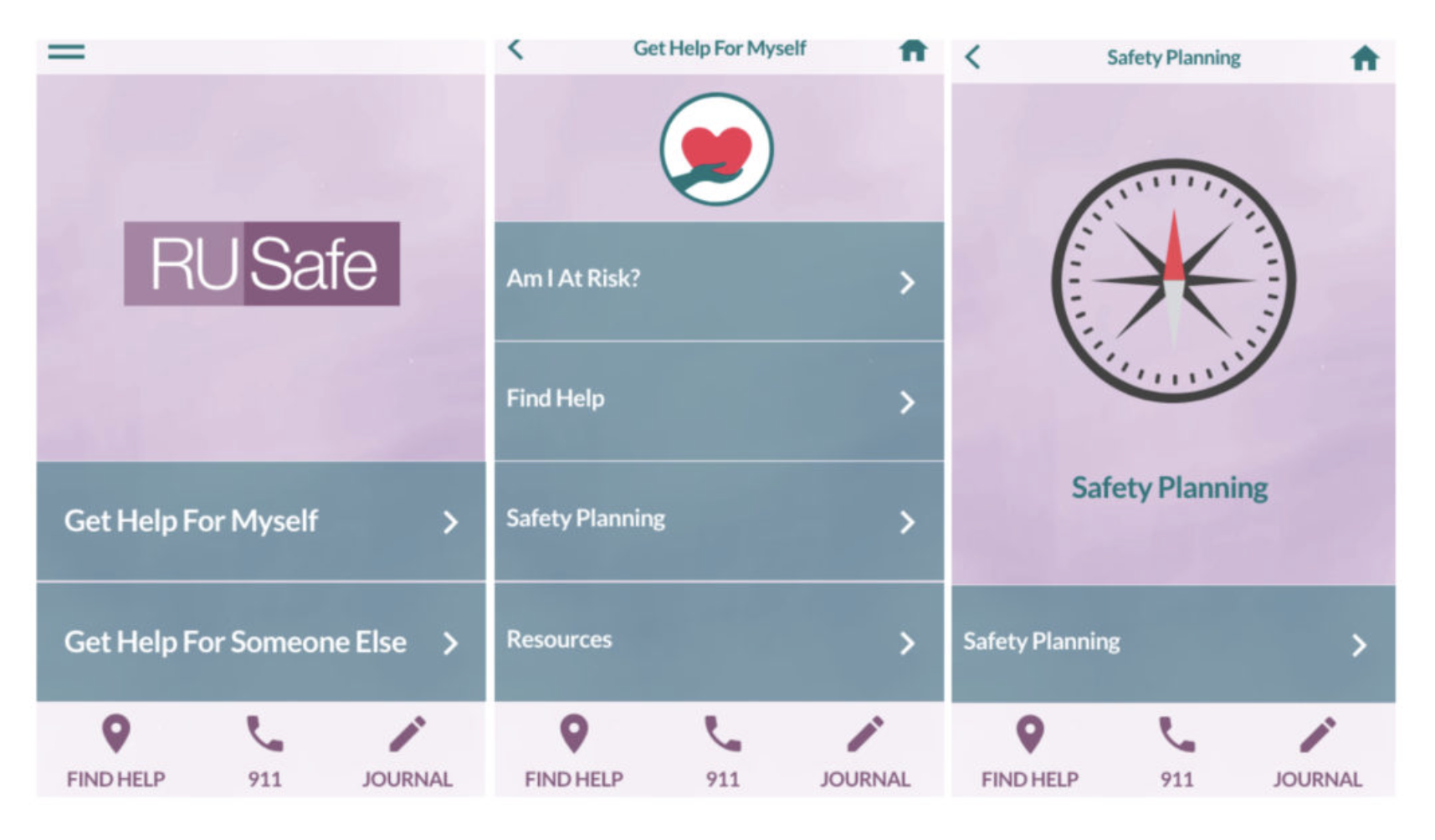
RU Safe
RU Safe was the most comprehensive DV app I could find, but the experience was still sparse. The interface looked very outdated. It featured a risk assessment, safety planning, journaling, educational content, service locator, and the ability to call 911 from the app. Some of these features, such as the risk assessment, made for an interactive experience for the user.
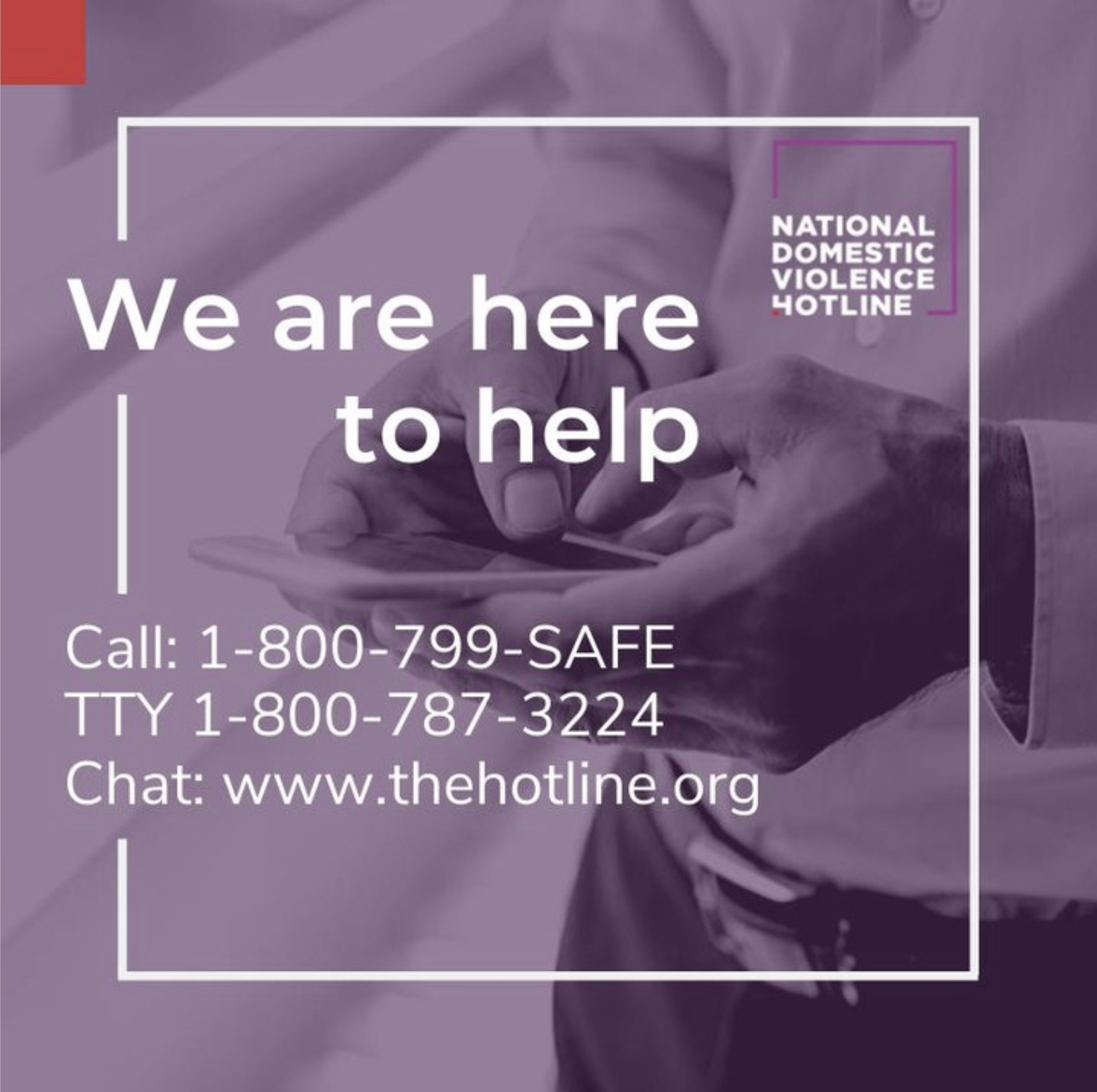
National Domestic Violence Hotline
NDVH is a website that is a primary resource on DV. It is the first listing when searching "domestic violence". This is a very comprehensive website with educational content spanning a variety of topics connected to DV, from financial matters to immigrant status. The site also features chat access to the hotline. The site is geared toward general use and lacks personalization in the way an app or account could provide.
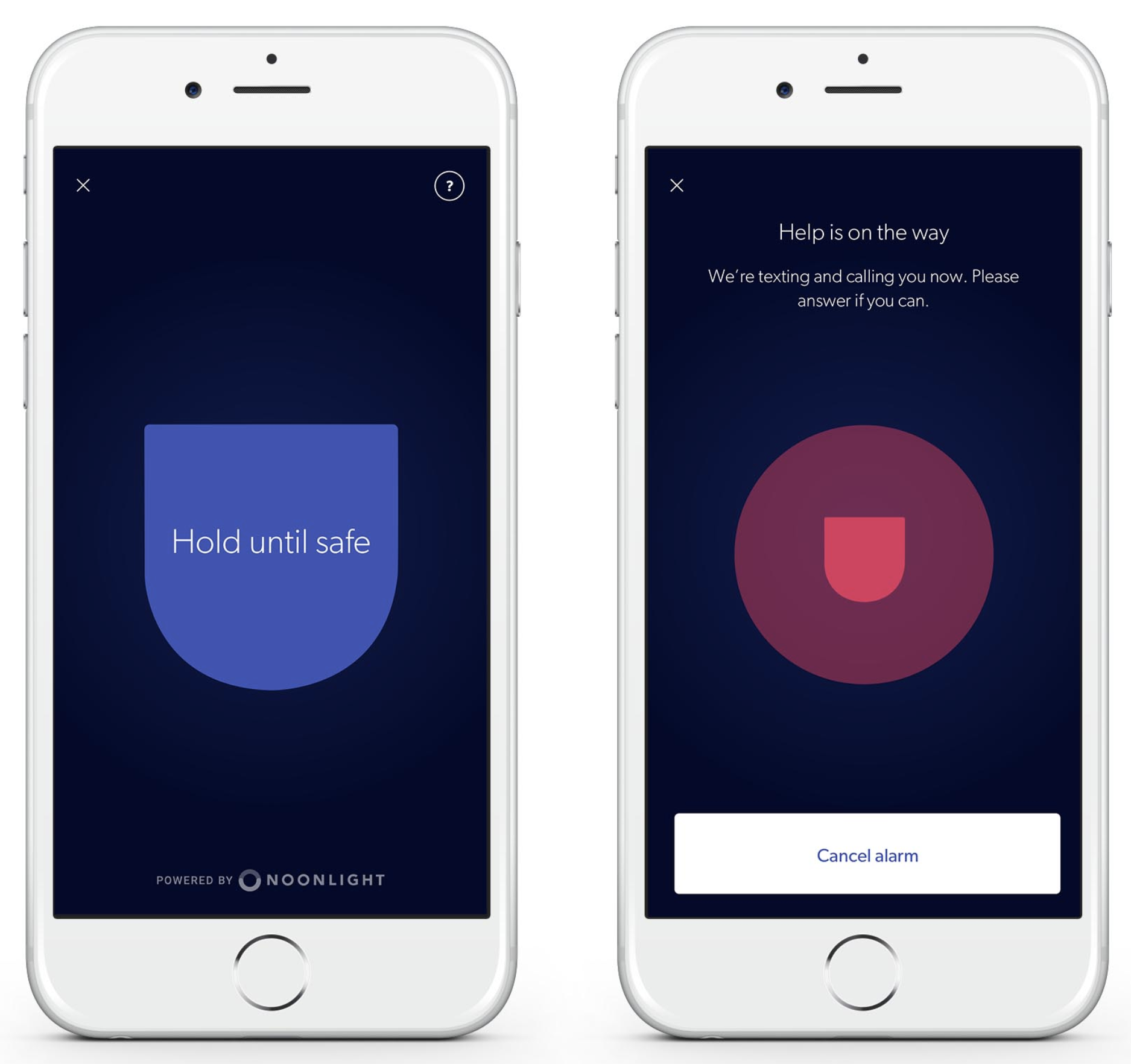
Noonlight
Noonlight is an indirect competitor. The app is a personal safety app that can notify the local police of the emergency and exact location. The app features a button that the user holds until they are safe, a timeline to let the user share who/when/where they are meeting, and a safety network consisting of the user's closest contacts. The concept of a personal safety app could potentially align with how an established DV hotline operates.
Interviews & Findings
My goal with the interviews was to understand what barriers domestic violence victims face in regard to coping or getting help, as well as what role DV organizations play.
I thoughtfully wrote a series of questions to guide the discussions and was conscious of carrying out the interview in a careful, ethical, and respectful manner that is necessary for conversations around trauma.
I wrote sets of questions for victims/survivors and counselors/experts. I contacted DV organizations in NYC and was able to interview two directors. I also interviewed two survivors, recruited from my personal network.
DV is a nuanced and complex topic, and can be examined from many different angles. I noticed that recognizing abuse and figuring out the next steps were a common theme among the interviews. Data points gathered from the interviews are shown on the affinity map on the left. A few key observations are outlined below.
I thoughtfully wrote a series of questions to guide the discussions and was conscious of carrying out the interview in a careful, ethical, and respectful manner that is necessary for conversations around trauma.
I wrote sets of questions for victims/survivors and counselors/experts. I contacted DV organizations in NYC and was able to interview two directors. I also interviewed two survivors, recruited from my personal network.
DV is a nuanced and complex topic, and can be examined from many different angles. I noticed that recognizing abuse and figuring out the next steps were a common theme among the interviews. Data points gathered from the interviews are shown on the affinity map on the left. A few key observations are outlined below.
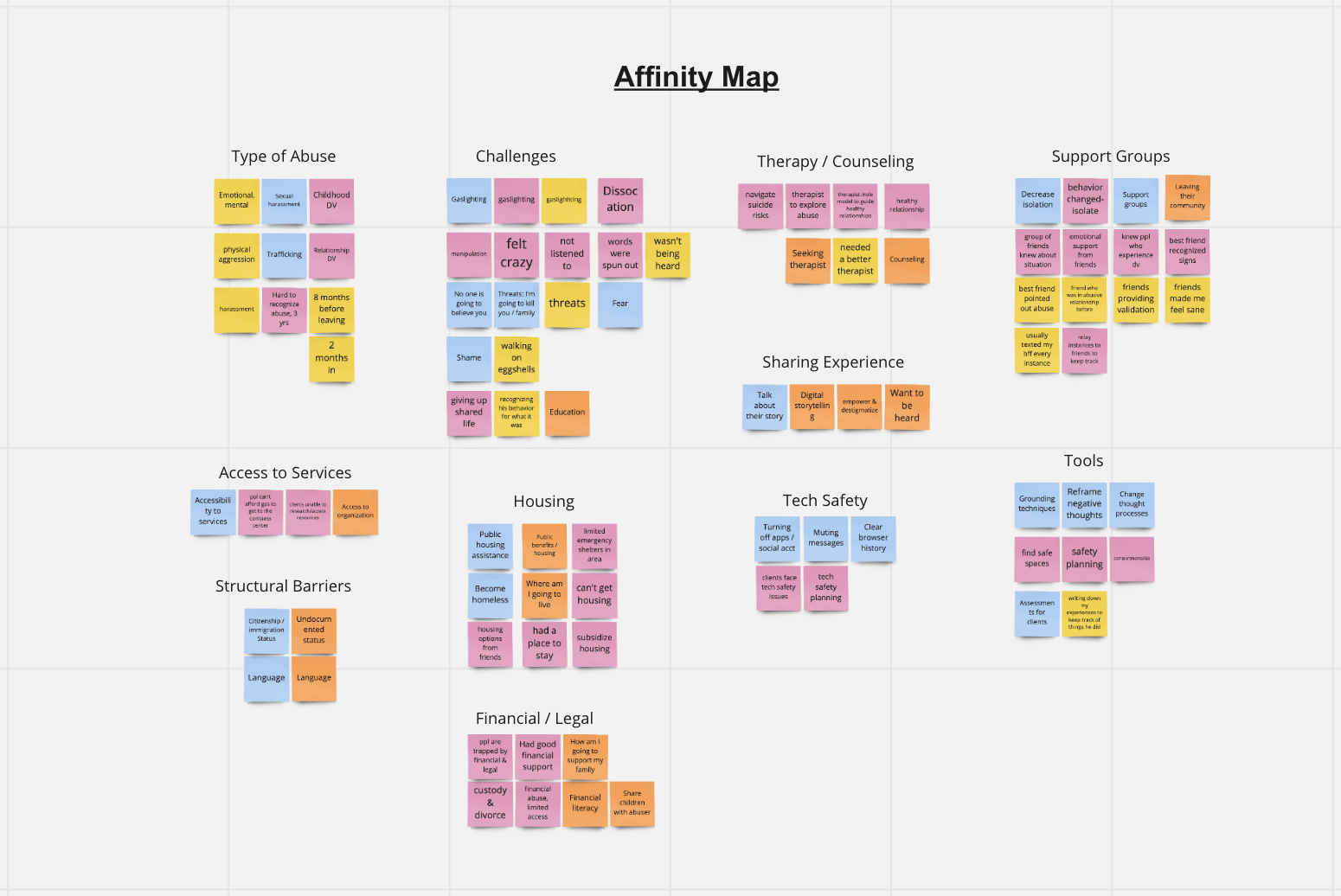
Speaking to survivors gave me insight into their traumas and how they got out of their situation.
- The types of abuse they faced included emotional, mental, and sexual abuse.
- They described the confusion and fear that they felt, and the manipulation and gaslighting they endured.
- They found support from their friends who made them feel sane and recognized the signs of abuse. Therapy also helped them work through the situation.
Speaking to organization directors gave me insight into how they served their clients and what challenges they faced.
- Some of the tools they used included grounding techniques, reframing thought processes, and safety planning.
- Language may be a barrier to someone seeking help, so their organization served the Spanish-speaking community.
- Victims were trapped due to sharing children with the abuser or financial or legal reasons.

Persona
From the interviews, I learned about the day-to-day lives of these survivors and their experiences and challenges with domestic violence. I used the data to build a user persona and prioritize features.
Bio & Behaviors
- Dara is 23 years-old, college-educated, and lives in the US
- Works at a non-profit organization, has a strict daily routine, and spends most of her time with her partner.
- Dara is in an abusive relationship that involves emotional abuse, threats, manipulation
- She feels like she is not being heard and is being gaslighted
- She does not know how to navigate her relationship
Goals & Needs
- Dara wants to know what resources are available to her
- She wants to understand her situation and feel less isolated
- She wants to have a contact or plan in case of emergencies
Feature Prioritization
I mapped users' challenges to potential features that may solve some of their problems. I used an impact x effort matrix to parse out the MVP features. The features highlighted for "now" made it to the prototype.
- Victims are subject to gaslighting and feel "crazy". Journaling can help them to keep track of their experiences.
- Victims receive threats and feel fearful. Creating a way for them to get in contact with a DV hotline, 911, and send a distress message to their emergency contact(s) is crucial.
- Victims do not recognize the signs of abuse for considerable periods of time and do not know what a healthy relationship consists of. This could be solved with educational content and a risk assessment.
- Victims need access to resources such as therapy and legal aid should have a way to easily find them.
- Victims using technology need to be protected with a discreet interface. A passcode and quick exit button can keep the app secure.
- Victims may not know what to do in an emergency, so a guided safety planning tool can let them lay out the steps they need to take.

Design Drafts
Sitemap

Userflow
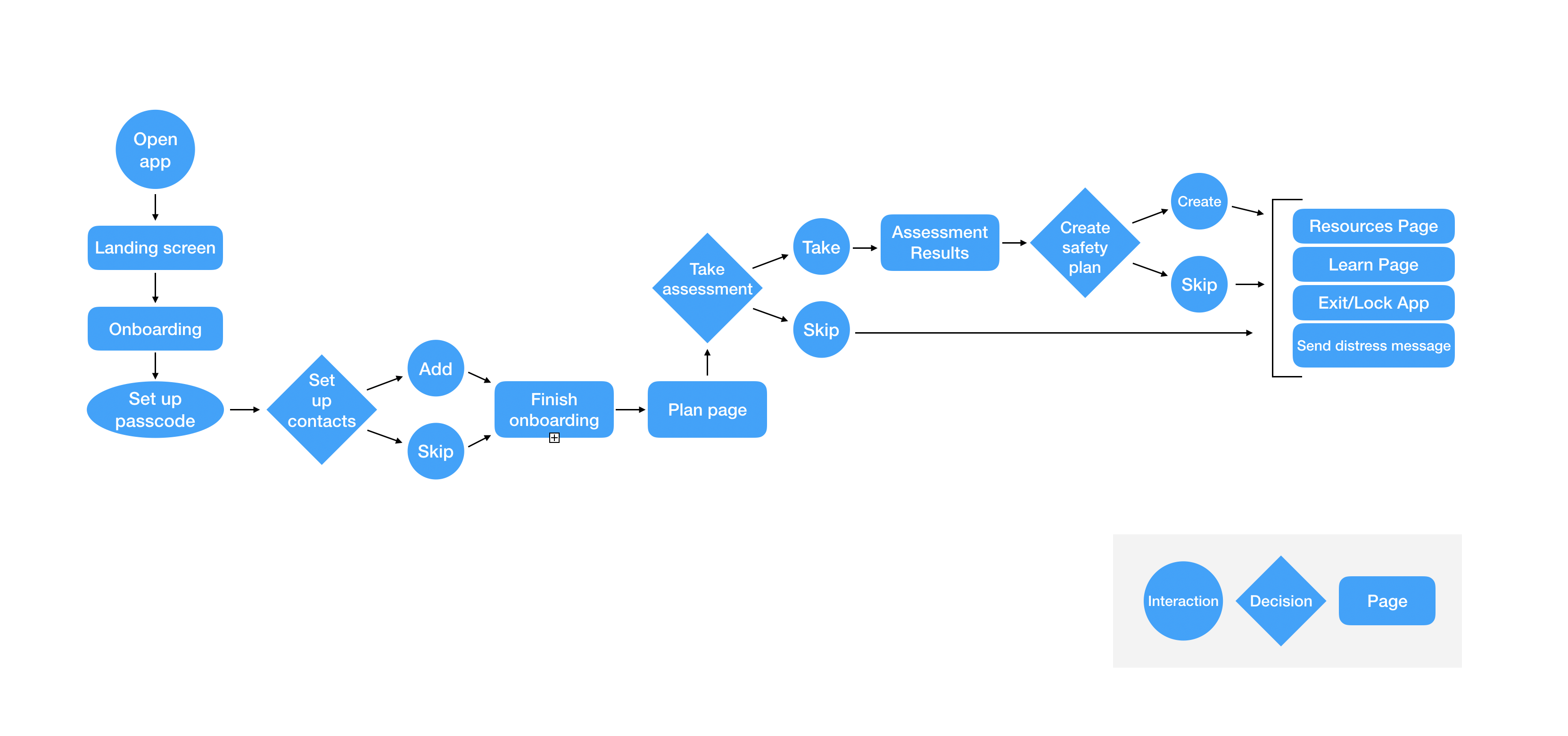
Sketches

Card Sort

Wireframes & Prototype
A few wireframes are outlined below. View the prototype for the full experience.
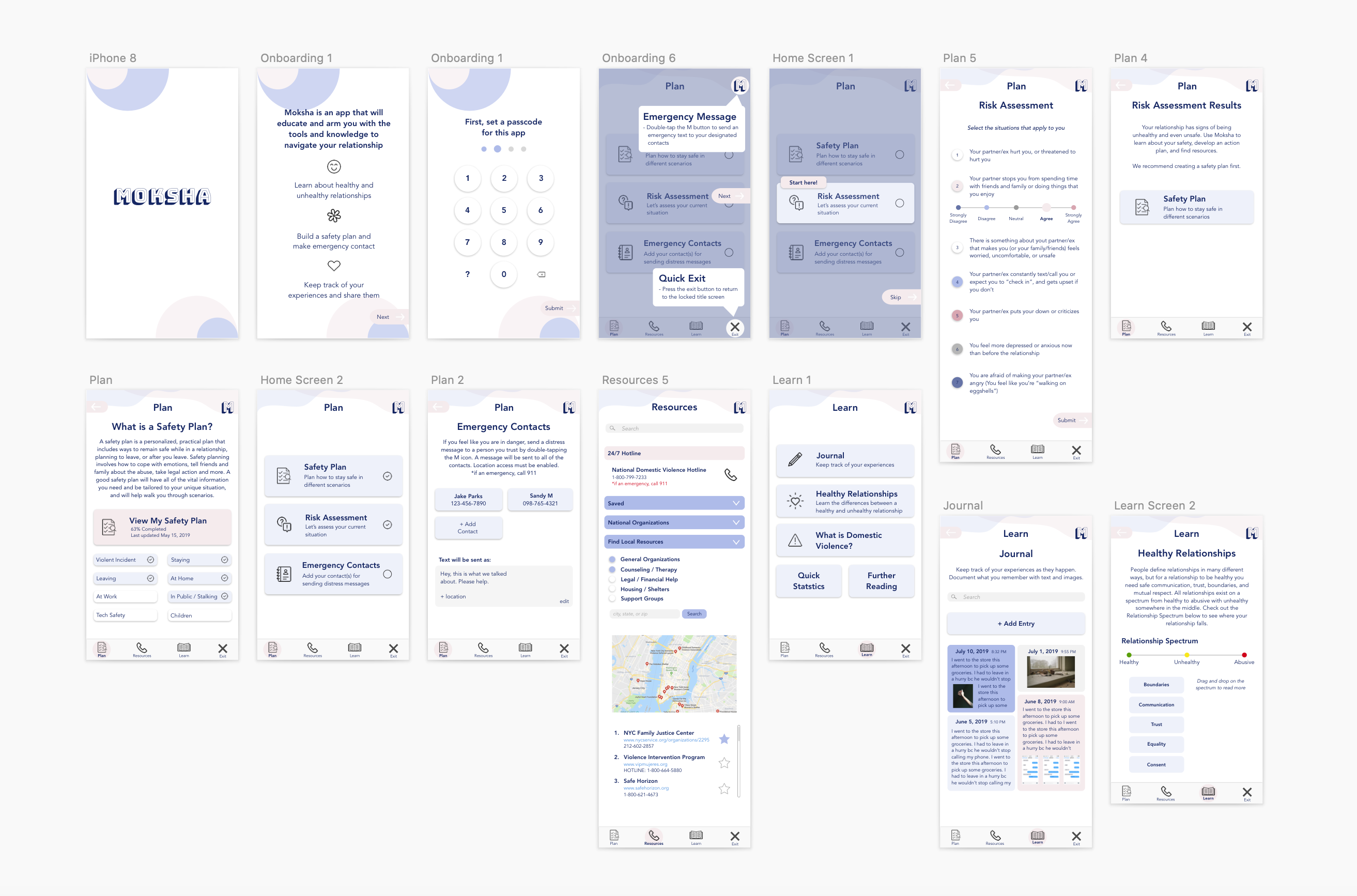
User Testing & Next Steps
The design cycle is an iterative loop, so improvements can always be made. I user-tested three people. Some of the results are featured on the right, and the feedback was implemented in the prototype.
Next phase features include optimized content & copy, the ability to create an account, a discreet layer to hide the functionality of the app, a hotline chat, a language selector, and the ability to share your experiences with others.
- User chose safety plan and emergency contacts first, instead of risk assessment. I added instructional messaging to the interface for first-time users.
- User was unsure of the icons in navigation. I added text to the menu icons.
- Only one user paid attention to onboarding screens. I shortened the onboarding process and condensed the copy.
- User had trouble rating the questions in the risk assessment. I turned the numerical rating scale into a Likert scale.